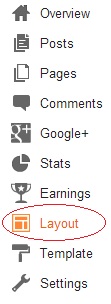It's relatively easy to set-up a different version of node js in Openshift:
1. rhc app create -a nodeapp -t nodejs-0.6
-- you can add "-s" to make the app scalable e.g. rhc app create -a nodeapp -t nodejs-0.6 -s
2.
cd nodeapp
git remote add upstream -m master git://github.com/openshift/nodejs-custom-version-openshift.git
git pull -s recursive -X theirs upstream master
3. Edit .openshift/markers/NODEJS_VERSION and specify the version you want, e.g. 0.8.14
4. Commit then git push
That's it! Happy coding!
[Updated March 2013] Created a Swig, Mongoose, Passport, Zurb Foundation and Node JS 0.10.1
package in github for OpenShift. I confirm that OpenShift works with Node JS 0.10.1
> rhc app create -a nodeapp -t nodejs-0.6
> rhc cartridge add mongodb-2.2 --app nodeapp
> cd nodeapp
> git remote add upstream -m master https://github.com/mannyvergel/node-swig-openshift-quickstart.git
> git pull -s recursive -X theirs upstream master
-- Edit .openshift/markers/NODEJS_VERSION commit then git push







